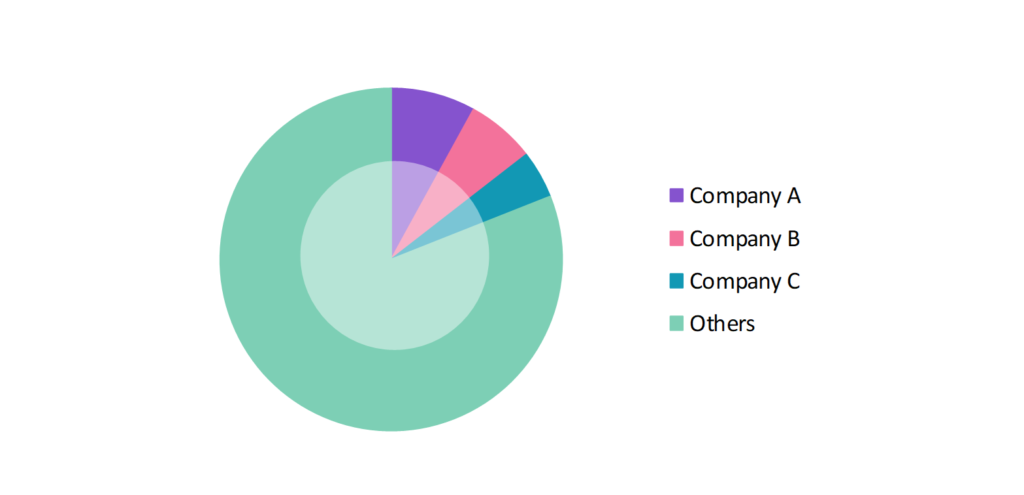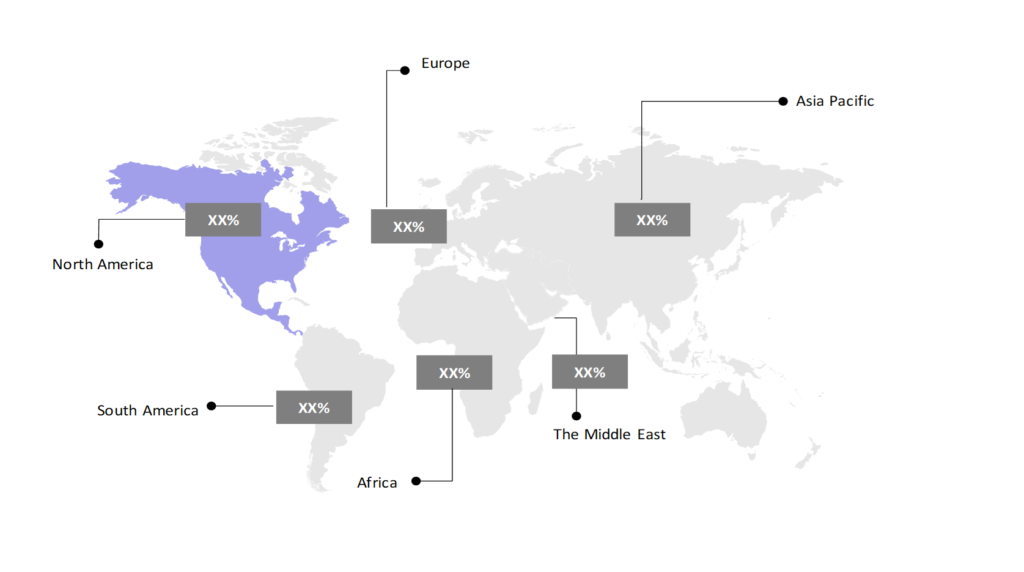Indoor Farming Technology Market Insights: Size, Share, Growth Analysis & Forecast (2024 – 2029)
The market report provided a comprehensive analysis segmented by Growing System (Hydroponics, Aeroponics, Aquaponics, Soil-based, Hybrid); by Facility (Glass or Poly Greenhouse, Indoor Vertical Farms, Container Farms, Indoor DWC Systems); by Component (Hardware, Software and Services); by Crop Type (Fruits & Vegetables, Herbs & Microgreens, Flowers & Ornamentals, Other Crop Types); by Geography (North America, South America, Asia Pacific, Europe, The Middle East, Africa).
Outlook

- The indoor farming technology market is estimated to be at USD 2,284.73 Mn in 2024 and is anticipated to reach USD 3,432.84 Mn in 2029.
- The indoor farming technology market is registering a CAGR of 8.48% during the forecast period of 2024-2029.
- The indoor farming technology market is rapidly evolving to respond to the need for sustainable and efficient agricultural practices. The market is driven by urbanization, the rising demand for fresh and pesticide-free produce, and advancements in farming technology.
Request a free sample.
Ecosystem

- The participants in the global indoor farming technology industry are always developing strategies to preserve a competitive advantage.
- These companies focus on research and development, innovation and strategic partnerships.
- Several important entities in the indoor farming technology market include The Scotts Miracle-Gro Co.; Signify N.V.; Netafim Ltd.; Argus Group Holdings Ltd.; Heliospectra AB; and others.
Ask for customization.
Findings
| Attributes | Values |
|---|---|
| Historical Period | 2018-2022 |
| Base Year | 2023 |
| Forecast Period | 2024-2029 |
| Market Size (2024) | USD 2,284.73 Mn |
| Market Size (2029) | USD 3,432.84 Mn |
| Growth Rate | 8.48% CAGR from 2024 to 2029 |
| Key Segments | Growing System (Hydroponics, Aeroponics, Aquaponics, Soil-based, Hybrid); Facility (Glass or Poly Greenhouse, Indoor Vertical Farms, Container Farms, Indoor DWC Systems); Component (Hardware, Software and Services); Crop Type (Fruits & Vegetables, Herbs & Microgreens, Flowers & Ornamentals, Other Crop Types); Geography (North America, South America, Asia Pacific, Europe, The Middle East, Africa) |
| Key Vendors | The Scotts Miracle-Gro Co.; Signify N.V.; Netafim Ltd.; Argus Group Holdings Ltd.; Heliospectra AB |
| Key Countries | The US; Canada; Mexico; Brazil; Argentina; China; India; Japan; South Korea; The UK; Germany; Italy; France; Spain; Israel; UAE; Saudi Arabia; Egypt; South Africa |
| Largest Market | North America |
Trends
- Integration of AI and IoT in Farming: Integrating AI and IoT in indoor farming enhances precision agriculture by optimizing water usage, lighting, and climate control. Companies like Plenty use AI-powered systems to monitor crop health in real-time, improving yield and reducing waste. This trend is expected to grow further as technology advances.
- Adoption of Hydroponics and Aeroponics: Hydroponic and aeroponic systems are increasingly being adopted for their efficiency in resource use, especially water. These soilless farming methods are ideal for urban areas where space is limited.
- Sustainability and Organic Production: Indoor farming technology increasingly incorporates sustainability and organic production, focusing on integrating renewable energy sources and minimizing waste. The emphasis is on developing systems that enhance resource efficiency while supporting organic cultivation practices.
Speak to analyst.
Catalysts
- Rising Food Demand Due to Population Growth: Rising food demand driven by population growth is a significant market driver, as an increasing global population requires more food resources. This surge in demand stimulates advancements in agricultural technology, food production efficiency, and supply chain innovations to meet the needs of a growing consumer base. The pressure to ensure food security and sustainability fuels investments and developments across the food industry.
- Climate Change and Unpredictable Weather: The increasing impact of climate change and unpredictable weather patterns is accelerating the adoption of indoor farming, as it offers a controlled environment that mitigates the risks associated with traditional agriculture. This shift allows for year-round crop production, enhances yield consistency, and reduces reliance on external weather conditions, driving innovation and investment in this resilient farming method.
- Government Support and Incentive: Governments worldwide are providing support and incentives for the development of indoor farming to address food security and sustainability. In 2023, the U.S. Department of Agriculture (USDA) announced grants for urban and indoor farming projects, spurring growth in the sector.
Inquire before buying.
Restraints
- High Initial Investment Costs: The setup costs for indoor farming technology are significantly higher than traditional farming, posing a barrier to entry. The high cost of equipment, such as LED lights, climate control systems, and automation technology, can be prohibitive for small-scale farmers.
- Regulatory and Zoning Issues: Indoor farms, especially those in urban areas, often face regulatory and zoning challenges. Navigating these regulations can delay projects and increase costs. For example, urban farms in New York City have faced zoning restrictions that limit the expansion of vertical farms, hindering market growth.
- Technological Complexity and Skill Requirement: The operation of indoor farms requires specialized knowledge in horticulture, data analytics, and systems management. The technological complexity can be a hurdle for traditional farmers transitioning to indoor farming.
Personalize this research.
Hotspot

Explore purchase options.
Table of Contents
| 1. Introduction 1.1. Research Methodology 1.2. Scope of the Study 2. Market Overview / Executive Summary 2.1. Global Indoor Farming Technology Market (2018 – 2022) 2.2. Global Indoor Farming Technology Market (2023 – 2029) 3. Market Segmentation 3.1. Global Indoor Farming Technology Market by Growing System 3.1.1. Hydroponics 3.1.2. Aeroponics 3.1.3. Aquaponics 3.1.4. Soil-based 3.1.5. Hybrid 3.2. Global Indoor Farming Technology Market by Facility 3.2.1. Glass or Poly Greenhouse 3.2.2. Indoor Vertical Farms 3.2.3. Container Farms 3.2.4. Indoor DWC Systems 3.3. Global Indoor Farming Technology Market by Component 3.3.1. Hardware 3.3.2. Software and Services 3.4. Global Indoor Farming Technology Market by Crop Type 3.4.1. Fruits & Vegetables 3.4.2. Herbs & Microgreens 3.4.3. Flowers & Ornamentals 3.4.4. Other Crop Types 4. Regional Segmentation 4.1. North America 4.1.1. The US 4.1.2. Canada 4.1.3. Mexico 4.2. South America 4.2.1. Brazil 4.2.2. Argentina 4.2.3. Colombia 4.2.4. Chile 4.2.5. Rest of South America 4.3. Asia Pacific 4.3.1. China 4.3.2. India 4.3.3. Japan 4.3.4. South Korea 4.3.5. Rest of Asia Pacific 4.4. Europe 4.4.1. The UK 4.4.2. Germany 4.4.3. Italy 4.4.4. France 4.4.5. Spain 4.4.6. Rest of Europe 4.5. The Middle East 4.5.1. Turkey 4.5.2. UAE 4.5.3. Saudi Arabia 4.5.4. Rest of the Middle East 4.6. Africa 4.6.1. Egypt 4.6.2. South Africa 4.6.3. Rest of Africa 5. Value Chain Analysis of the Global Indoor Farming Technology Market 6. Porter Five Forces Analysis 6.1. Threats of New Entrants 6.2. Threats of Substitutes 6.3. Bargaining Power of Buyers 6.4. Bargaining Power of Suppliers 6.5. Competition in the Industry 7. Trends, Drivers and Challenges Analysis 7.1. Market Trends 7.1.1. Market Trend 1 7.1.2. Market Trend 2 7.1.3. Market Trend 3 7.2. Market Drivers 7.2.1. Market Driver 1 7.2.2. Market Driver 2 7.2.3. Market Driver 3 7.3. Market Challenges 7.3.1. Market Challenge 1 7.3.2. Market Challenge 2 7.3.3. Market Challenge 3 8. Opportunities Analysis 8.1. Market Opportunity 1 8.2. Market Opportunity 2 8.3. Market Opportunity 3 9. Competitive Landscape 9.1. The Scotts Miracle-Gro Co. 9.2. Signify N.V. 9.3. Netafim Ltd. 9.4. Argus Group Holdings Ltd. 9.5. Heliospectra AB 9.6. Company 6 9.7. Company 7 9.8. Company 8 9.9. Company 9 9.10. Company 10 |
Know the research methodology.
Indoor Farming Technology Market – FAQs
1. What is the current size of the indoor farming technology market?
Ans. In 2024, the indoor farming technology market size is USD 2,284.73 Mn.
2. Who are the major vendors in the indoor farming technology market?
Ans. The major vendors in the indoor farming technology market are The Scotts Miracle-Gro Co.; Signify N.V.; Netafim Ltd.; Argus Group Holdings Ltd.; Heliospectra AB.
3. Which segments are covered under the indoor farming technology market segments analysis?
Ans. The indoor farming technology market report offers in-depth insights into Growing System, Facility, Component, Crop Type, and Geography.
